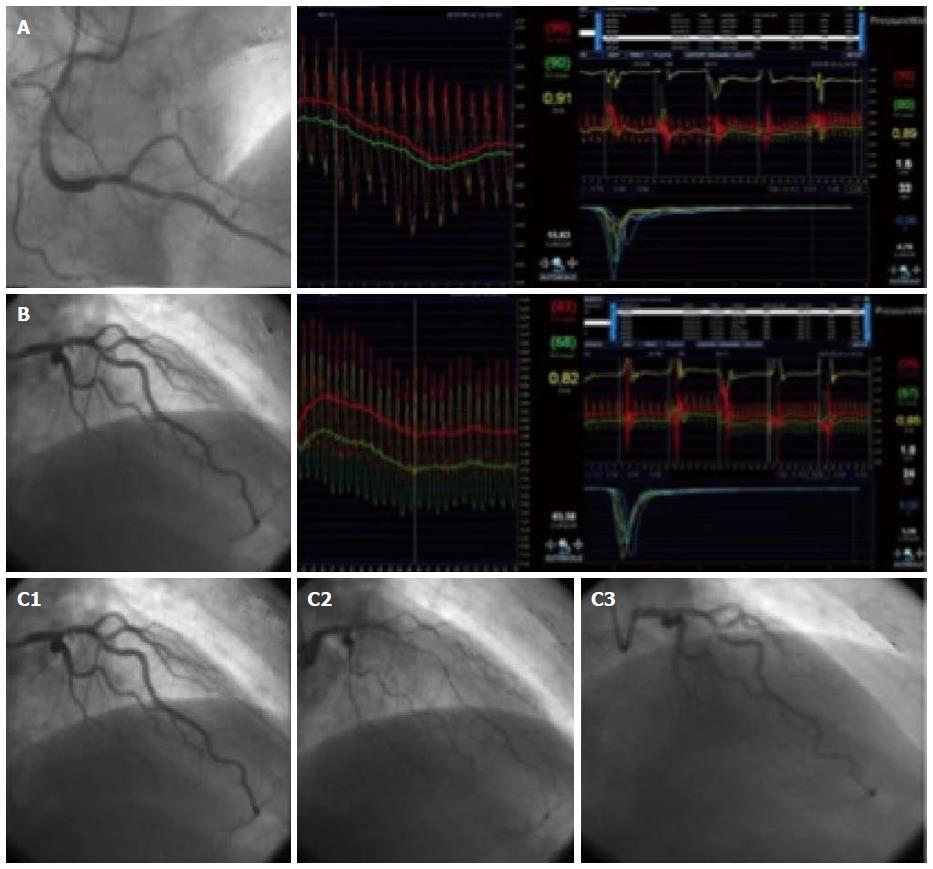Copyright
©The Author(s) 2015.
World J Cardiol. Sep 26, 2015; 7(9): 525-538
Published online Sep 26, 2015. doi: 10.4330/wjc.v7.i9.525
Published online Sep 26, 2015. doi: 10.4330/wjc.v7.i9.525
Figure 4 Thorough physiological assessment: Fractional flow reserve, microvascular and endothelial function.
A 66-year-old man with typical angina, both resting and exertional, was referred for coronary catheterization. The coronary angiogram showed moderate lesions on the posterior descending artery of the RCA (50%) and on the middle LAD (40%). Panel A depicts the coronary stenosis of the RCA on the left box; FFR of this lesion on the centre box, with a value of 0.91; and microvascular study on the right box, with a CFR of 1.5 (low) and IMR of 33 (elevated); Similarly, Panel B shows the angiogram of the LAD (left), the FFR of 0.82 (centre), and the microvascular study (right), with a CFR 1 (low) and IMR 24 (borderline); Panel C shows the successive angiograms at baseline (C1), after 20 μg of acetylcholine (C2), and after 200 μg of nitroglycerin (C3). As can be appreciated, a severe diffuse spasm of the left coronary artery was induced by acetylcholine. We concluded that both coronary stenosis were non-significant, and decided on optimal medical therapy. The study also revealed microvascular endothelium-independent dysfunction, and macrovascular vasospasm due to endothelial dysfunction. CFR: Coronary flow reserve; FFR: Fractional flow reserve; IMR: Index of microcirculatory resistance; LAD: Left anterior descending artery; RCA: Right coronary artery.
- Citation: Díez-delhoyo F, Gutiérrez-Ibañes E, Loughlin G, Sanz-Ruiz R, Vázquez-Álvarez ME, Sarnago-Cebada F, Angulo-Llanos R, Casado-Plasencia A, Elízaga J, Diáz FFA. Coronary physiology assessment in the catheterization laboratory. World J Cardiol 2015; 7(9): 525-538
- URL: https://www.wjgnet.com/1949-8462/full/v7/i9/525.htm
- DOI: https://dx.doi.org/10.4330/wjc.v7.i9.525









